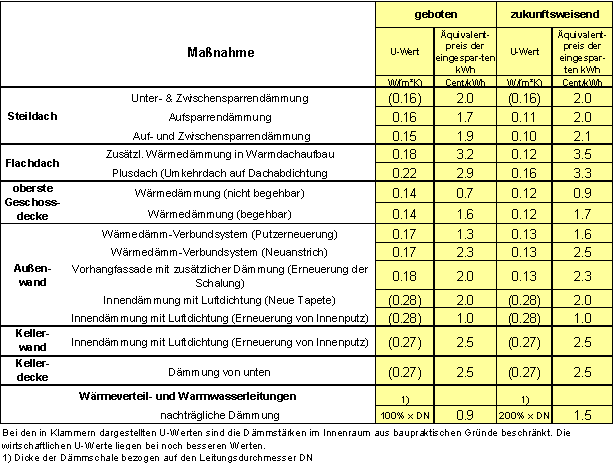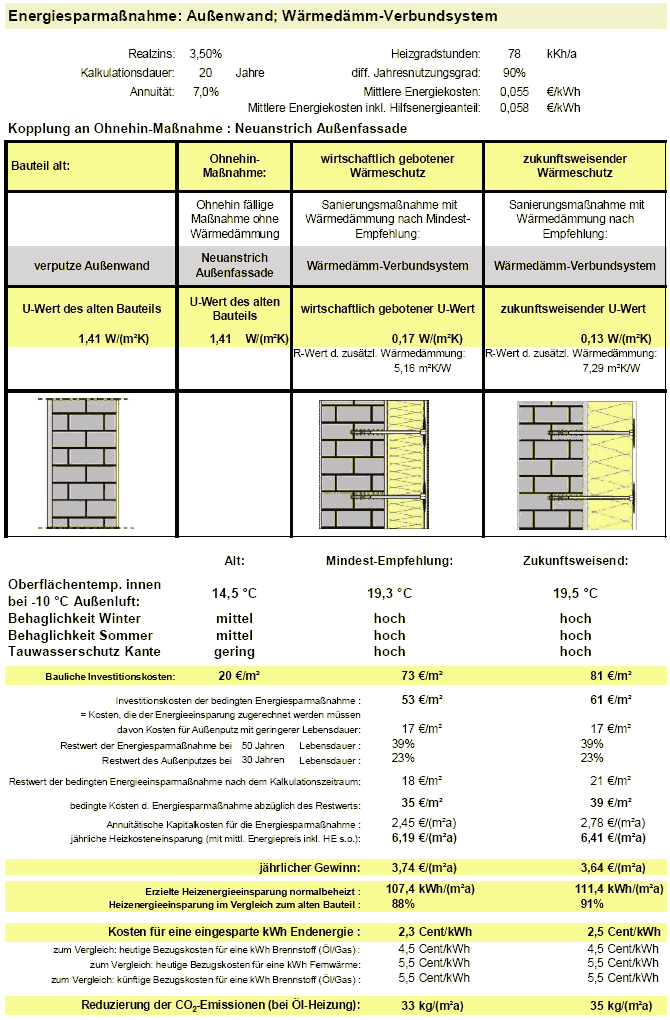Table of Contents
Superior thermal protection is affordable
In new constructions, walls, roofs, and other external building components are built up from scratch. As these components are assembled, additional insulation can be applied without incurring extra costs for the scaffolding, plaster or facing etc…
Most existing buildings were built in the days when heating energy was much cheaper than it is nowadays. The substance of the building is subject to constant changes including essential maintenance procedures and the modernisation of outdated buildings. Each of these measures offers the opportunity to adapt inadequate thermal properties of the building to future requirements. Again, thermal insulation measures can be combined with the maintenance measures which are necessary in any case.
A recent microeconomic study carried out by the Passive House Institute deals with the question of the cost-effectiveness of these measures from the investor's point of view. Even though this study is based on the general conditions in Germany which will vary depending on the specific energy prices, construction costs and climatic conditions of the region in question, it provides a general idea of the relationship between the initial investment for energy efficiency measures on the one hand and the savings in energy costs associated with these measures on the other hand.
[Kah, Feist 2005] .
- In contrast with an earlier study [Feist 1998] , the boundary conditions have changed fundamentally; for example, a significantly higher average energy price must be assumed today for the duration of use of the measures; the study expects an average of 5.5 cents/kWh.
- Besides, today the value-preserving and long-lasting effectiveness of insulation measures are regarded as proven, which why it is correct to apply a life cycle assessment here.
- In order to avoid speculations about the energy price and interest rate forecasts, the period under observation was limited to 20 years, however the quantifiable recovery value of the substance created was included.
Within this context, the inferences for Germany are clear:
- Improving the thermal protection of the building envelope components in existing buildings in Germany is micoreconomically profitable in each case that was studied, if the component is not already insulated; e.g. whenever scaffolding is put up for painting the facade or when the roof has to be renewed or restored.
- Improvement of thermal protection is profitable on the basis of the energy saved alone. Other advantages, like increased comfort, better protection of the building substance, increase in value, security against risks of the international energy market and the contribution to climate protection are additional benefits.
- Cost-efficiency is so much increased in contrast with the requirements of the currently valid standard [EnEV] , that under today's conditions, the best thermal protection measures available in terms of building practice are also the most optimum measures in terms of cost-effectiveness (see Table). In this respect, the recommendation is: “If it has to be done, it should be properly done” – one should never save on the quality of insulation.
- The annual cost of capital (repayment with interest) of the thermal protection measures, which serves as a measure of the economic efficiency, is based on the amount of energy saved. The price for each kilowatt hour (kWh) of energy saved can be determined in this way. For all individual measures that were studied, the price was between 1 and 3.5 cents/kWh per kWh saved - much less than the final energy price of 4.5 cents/kWh for the year 2005 (see Table). By the end of 2005 and beginning of 2006, the energy price was already at 5.5 cents/kWh, which is the value assumed as the average future energy price in the study (see Literature).
With the particularly reasonable development loan from the the KfW Development Loan Corporation, the results are even more favourable. Improving the thermal protection means that money is saved year after year; the financial burden due to the loan is much less than the savings in energy costs.
The table also shows that more is better: economising on the insulation thickness in particular does not pay off. Thicker insulation is only slightly more expensive; the greatest part of the investment costs consists of the basic costs for scaffolding, repairs, new plaster or new roof covering, detail adjustment etc… In contrast, the additional costs incurred for more insulation are small, but only if it is applied right at the start. Improving the insulation later on will again incur basic costs for scaffolding etc., this can hardly be economical.
The decisive principle which applies to thermal protection is
If it has to be done, it should be properly done – don't save on insulation thicknesses!
Example
Conclusion
Increased energy efficiency through better thermal protection is one of the most profitable “energy sources” today. The initial costs of these measures are even lower than the costs for normal fossil fuels. The value creation due to thermal protection measures will occur almost exclusively in the domestic economy, and will mainly benefit medium-sized businesses; the businesses located here have a high concentration of employment, so that consistent mobilisation of the economic potentials as shown here will have a significant employment effect.
Given this win-win situation, an active initiative for improving the quality as well as the rate of implementation was strongly recommended in the study (see Literature). With the KfW Development Loan Corporation’s new conditions for interest, such an initiative has now been taken: with interest rates that are 2 to 3 % below that of the market rate kfw-Program (Internet page of the development corporation), it becomes even more economically feasible due to the amount of interest saved.
Literature
[EnEV] Verordnung über energiesparenden Wärmeschutz und energiesparende Anlagentechnik bei Gebäuden (Energieeinsparverordnung - EnEV) vom 7.12.2004 Bundesgesetzblatt Jahrgang 2004 Teil I Nr. 64, S. 3147- 3162.
(German energy saving ordinance (EnEV) – regulations for energy-efficient thermal protection and system technology for buildings dated 7.12.2004 in the Federal Law Gazette, Part I, Number 64, pages 3147-3162)
[Feist 1998] W. Feist, Wirtschaftlichkeitsuntersuchung ausgewählter Energiesparmaßnahmen im Gebäudebestand, Fachinformation PHI-1998/3, Passivhaus Institut, Darmstadt 1998.
(Economic Feasibility of selected energy efficiency measures in existing buildings, Technical Information PHI-1998/3, Passive House Institute, Darmstadt, 1998)
[Kah, Feist 2005] Wirtschaftlichkeit von Wärmedämm-Maßnahmen im Gebäudebestand 2005.
(Economic feasibility of thermal insulation measures in existing buildings 2005; The full version of the study can be found here, in German: Economic feasibility of thermal insulation measures in existing buildings 2005 (in German))
[PHI 2008] Oliver Kah, Wolfgang Feist, Rainer Pfluger, Jürgen Schnieders, Berthold Kaufmann, Tanja Schulz, Zeno Bastian: Bewertung energetischer Anforderungen im Lichte steigender Energiepreise für die EnEV und die KfW-Förderung. im Auftrag des BBR. PHI, Darmstadt 2008 PHI-report Economy


